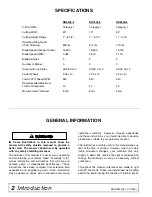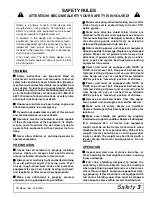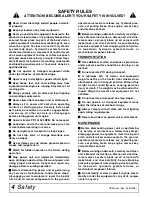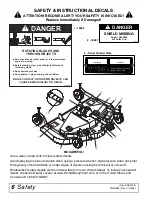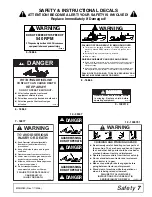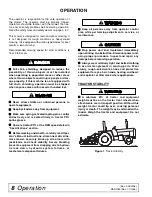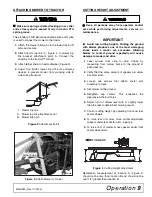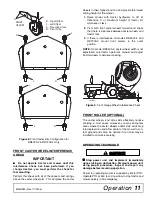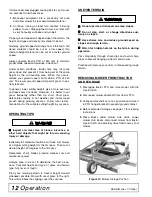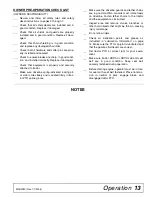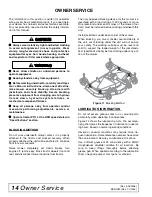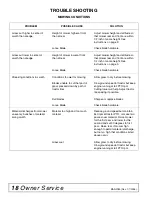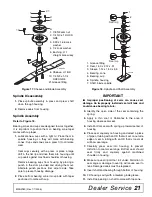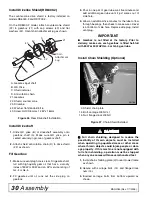
16
Owner Service
MAN0180 (Rev. 1/7/2005)
BELT SERVICE
Belt Replacement
One of the major causes of belt failure is improper
installation. Before installing a new belt, check the fol-
lowing:
1.
Check pulley shafts and bearings for wear.
2.
Check pulley grooves for cleanliness.
3.
Make sure spindles turn freely and without wobble.
If grooves require cleaning, moisten a cloth with a non-
flammable, non-toxic degreasing agent or commercial
detergent and water.
Avoid excessive force during installation. Do not use
tools to pry belt into pulley groove. Do not roll belt over
pulleys to install. This can cause hidden damage and
premature belt failure.
Figure 13
. Belt Routing
Belt Installation
Refer to Figure 13.
1.
Disconnect idler spring from deck lug I.
2.
Slide belt under drive pulley A and over idler arm.
Position belt around drive pulley A.
3.
Loosen bolt holding belt guide G and swing it away
from pulley B. Route belt around pulley B, idler C
and pulley D as shown.
4.
Make sure belt is on drive pulley A, route around
idler F, and connect idler spring to lug I on deck.
5.
Grasp belt between spindle pulley E, spring loaded
idler F and spindle pulley D. Pull spring loaded idler
with belt to obtain enough belt length to route it
over pulley E. Make sure spring-loaded idler pivots
freely with belt installed.
IMPORTANT
■
Use care when installing or removing belt from
spring-loaded idler at step 5. Springs store energy
when extended and, if released suddenly, can
cause personal injury.
6.
Adjust belt guide G to provide 1/16" to 1/8"
clearance from belt. Tighten bolt to 85 lb.-ft.
BLADE SERVICE
Before dismounting power unit or performing
any service or maintenance, follow these steps:
disengage power to equipment, lower the 3-point
hitch and all raised components to the ground,
operate valve levers to release any hydraulic pres-
sure, set parking brake, stop engine, remove key,
and unfasten seat belt.
Keep all persons away from operator control
area while performing adjustments, service, or
maintenance.
Blade Installation
Your dealer can supply genuine replacement
blades. Substitute blades may not meet original
equipment specifications and may be dangerous.
1.
Place cap screws (3) through outer holes in blade
and spindle shaft.
2.
Make sure blade cutting edge is positioned to lead
in a clockwise rotation, as viewed from top of
mower.
3.
Place locknuts (4) on screws, torque to 84 lbs-ft.
Figure 14
. Blade Assembly
WARNING
CAUTION
1
2
3
4
CD5060
1. Spindle assembly
2. Blade
3. 1/2 NC x 1-1/2 HHCS
GR5
4. 1/2 NC Flange lock

